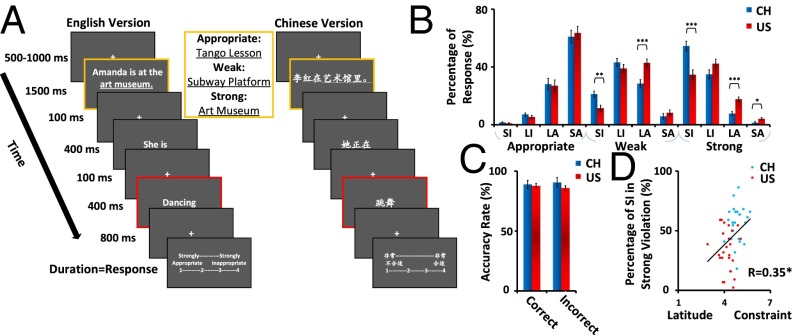Fig. 1.
The paradigm and behavior results. (A) The procedure of social norm violation task in which subjects were asked to judge whether certain behavior is appropriate or not in a given situation. Each behavior (e.g., dancing) was set in three situations: appropriate (e.g., tango lesson), weak (e.g., subway platform), and strong conditions (e.g., art museum). Participants were asked to judge whether the behavior was appropriate from 1 (strongly inappropriate) to 4 (strongly appropriate) by using an index and middle finger on the left and right hand on a keyboard. The rectangle with a red frame is the crucial word (e.g., dancing) for generating ERP components. (B) The mean values of percentages of the four responses (Strongly Inappropriate = SI, Lightly Inappropriate = LI, Lightly Appropriate = LA, and Strongly Appropriate = SA) in the appropriate/weak/strong condition in the social norm violation task. (C) The mean values of accuracy rates of correct and incorrect condition in semantic task. (D) The correlation between the percentages of strongly inappropriate and the subjective reports on latitude vs. constraint in daily life scale (higher scores indicate greater constraint).

